Color page 3 of 9
Color Hierarchy
The primary colors of light are red, blue, and green. These are all primary colors because they cannot be additively mixed by other colors.
In lighting, when mixing the three primaries, you get a white light.
*Color wheel including hue, tint and shade.
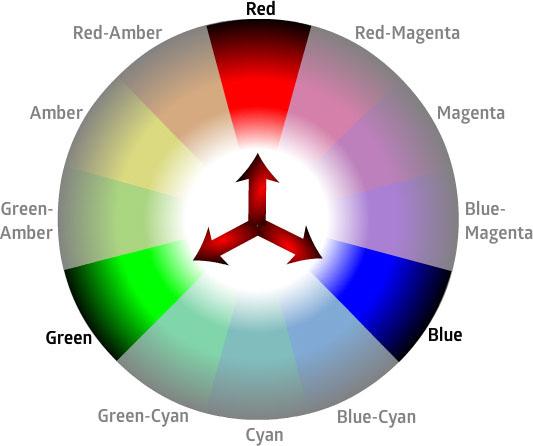
In lighting, when mixing the three primaries, you get a white light.
The secondary colors are amber, magenta, and cyan. Each secondary color is formed by additively mixing two primary colors.
- Amber (orangish yellow) = red + green
- Magenta (purple) = red + blue
- Cyan (turquoise)= blue + green
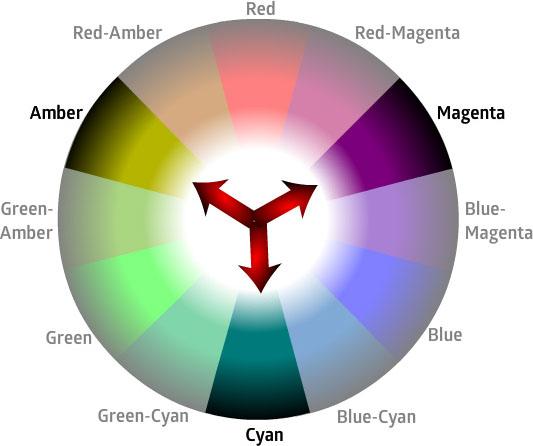
Each secondary color is formed by additively mixing two primary colors.
Intermediate colors are those hues between the primaries and secondaries.
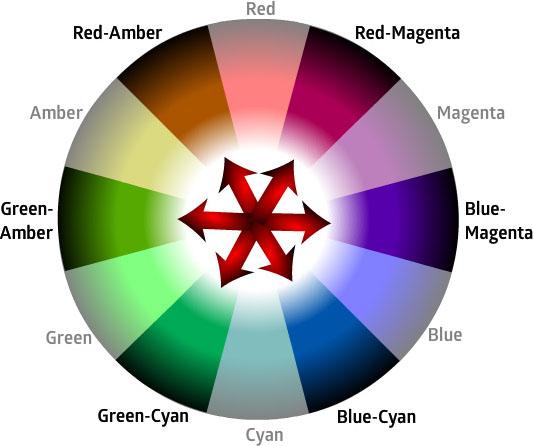
We see color because of two effects:
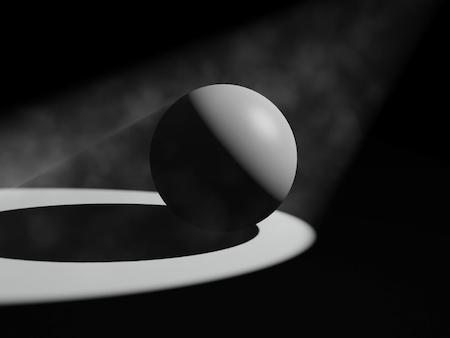

White light reflecting off of a white ball.
Selective transmission is a property of the color filter. We pass a white light, which is made up of all colors, through a blue filter. The filter absorbs all colors except blue, and only the blue light is transmitted.
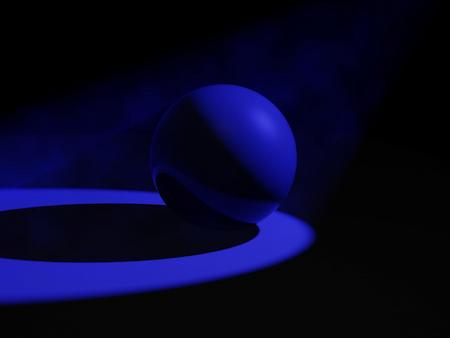

Blue light reflecting off of a white ball.
Selective reflection is the property of pigment. We shine white light on a blue surface. The pigment absorbs all colors except blue, and only the blue light is reflected back to our eye.
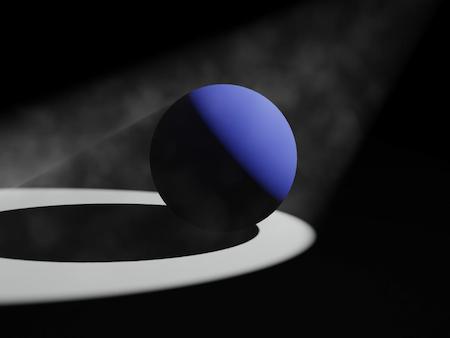

White light reflecting off of a blue ball.
There are two methods for mixing color in light.
Additive mixing combines wavelength of light to make another color. Green light from one instrument and red light from another combine “in the air” creating amber light on a white surface.Subtractive mixing removes wavelengths of light to make another color. We can subtract colors or take away wavelengths of light, by using color filters or by using color pigment.
Here is an example of subtractive mixing of color using two filters. White light, which is made up of red, blue, and green, passes through an amber filter. This filter passes the red and green but absorbs the blue. This amber light (red and green) then passes through a magenta filter. The magenta filter absorbs the green, passes blue (but there is none), and passes the red. The resulting light is red.
Color changing “intelligent fixtures” use subtractive mixing and dichroic filters to achieve their wide array of colors! So though we don’t usually use this effect with traditional units, the process can be useful. ful.
Dichroic filters are very accurate color filters that pass light of a small color range while reflecting the other colors.
Color changing “intelligent fixtures” use subtractive mixing and dichroic filters to achieve their wide array of colors! So though we don’t usually use this effect with traditional units, the process can be useful. ful.
Dichroic filters are very accurate color filters that pass light of a small color range while reflecting the other colors.
A quick note about diffusion: frosts and silks, most of which are white or “no color”, are not subtractive. Using them with color is typical, and they simply diffuse the light making it softer.
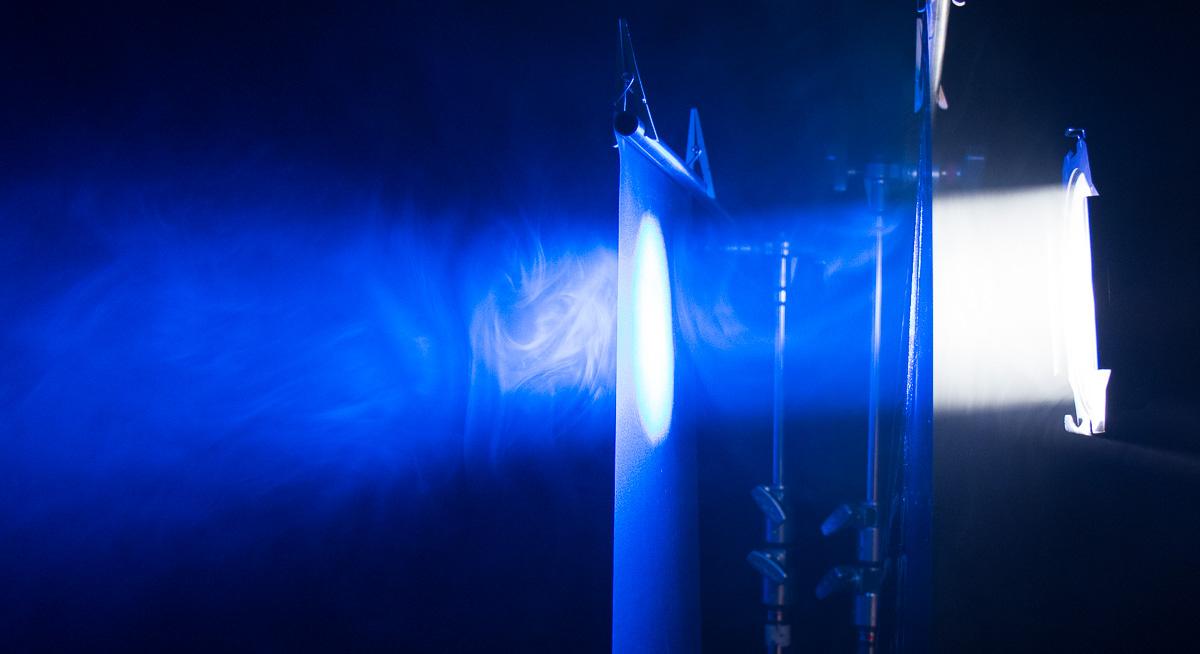 | |
Diffusion Filter(101 "Light Frost") allows all color, but spreads the beam. | Blue Filter(R-80) allows blue, absorbs most others |
Here's an example of the effect of subtractive color mixing of lighting pigment. White light (red, blue, and green) passes through an amber filter, which absorbs the blue. The resulting amber light strikes a magenta surface. The green is absorbed by the pigment; there is no blue, and the resulting reflected light is red.
Same fabric, same lighting instrument (position, intensity, etc.) one with no gel, one with amber gel.
Here is a chart noting the apparent color of each pigment swatch under each light color. Note that the effect of colored light on pigment is difficult to anticipate. This chart suggests the probable effects of the various colors of light on various color pigments, but the exact shade, tint, and intensity of each color may react in an unexpected way.
Experiment with costumes or fabric swatches whenever possible to see how various gels will affect the final coloring.

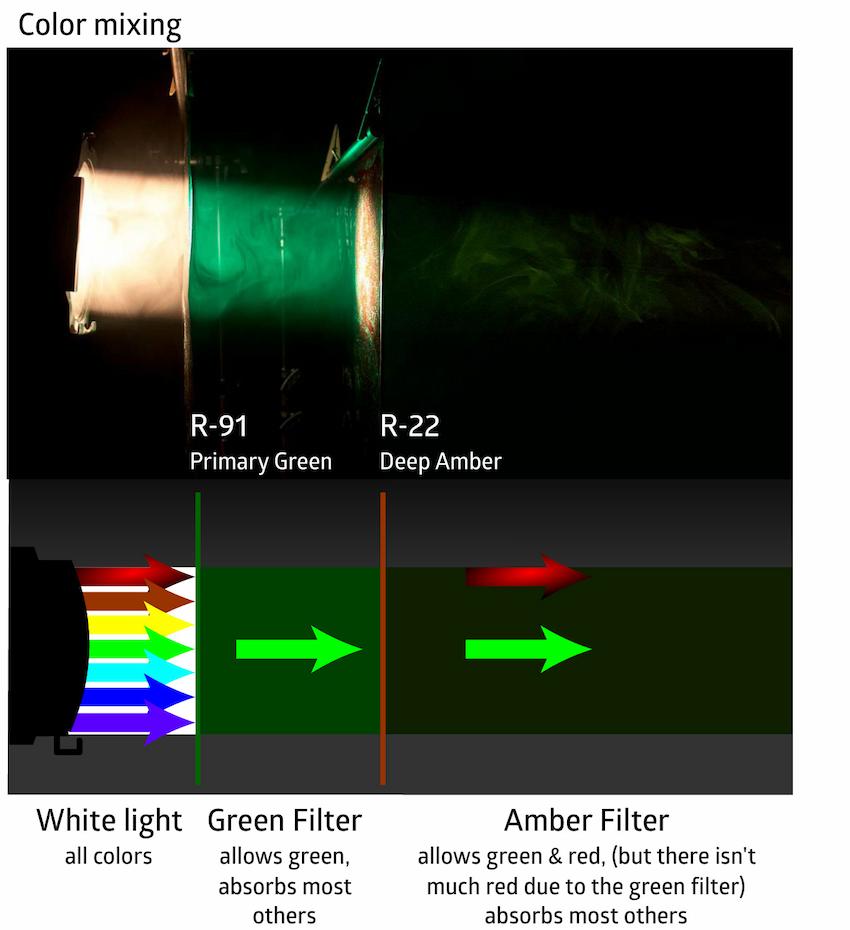
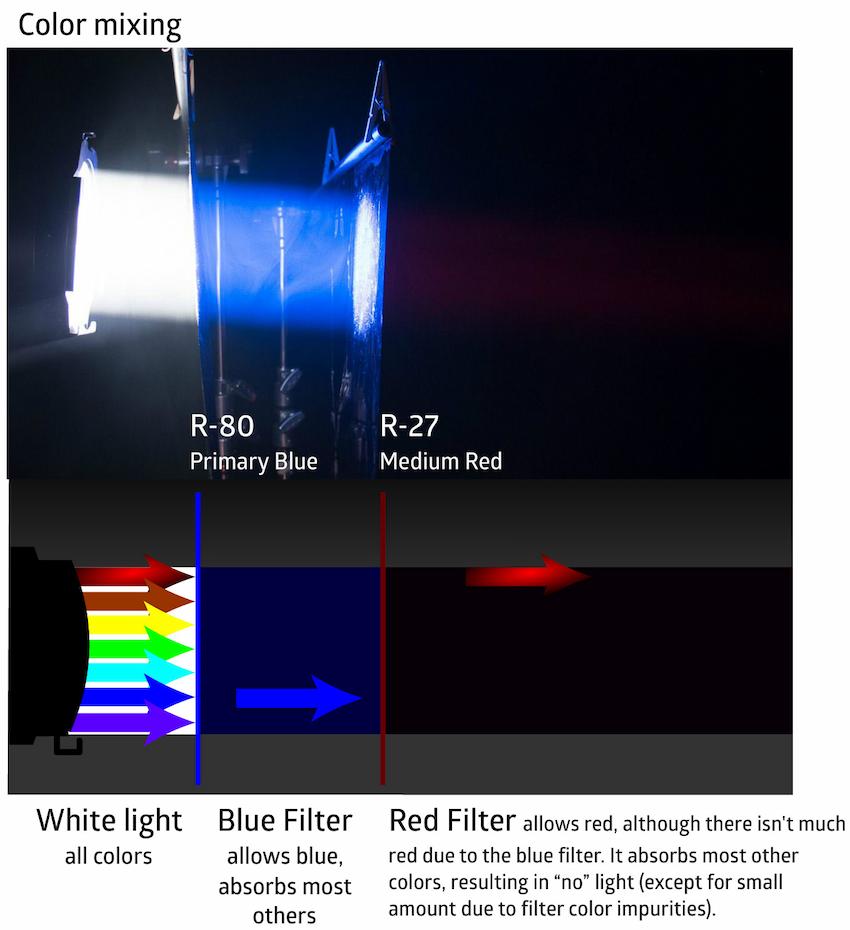

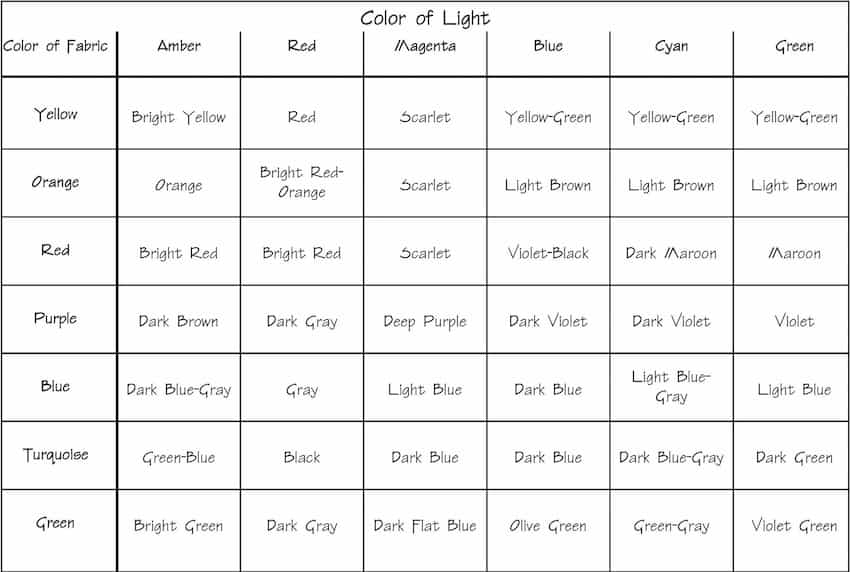
 © Multimakers Multimedia
© Multimakers Multimedia